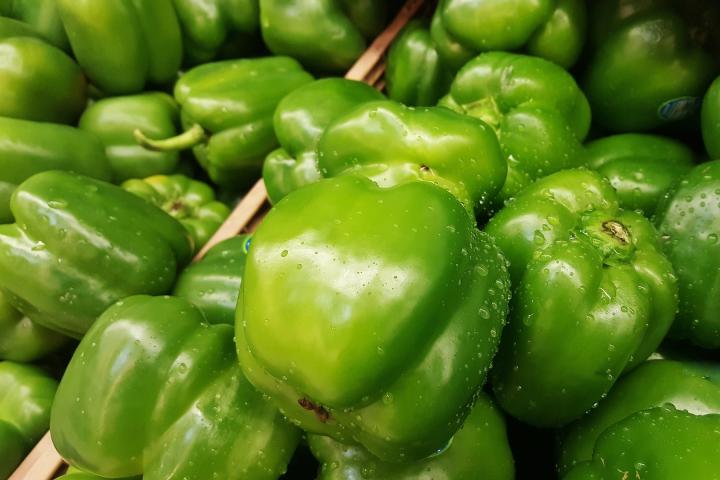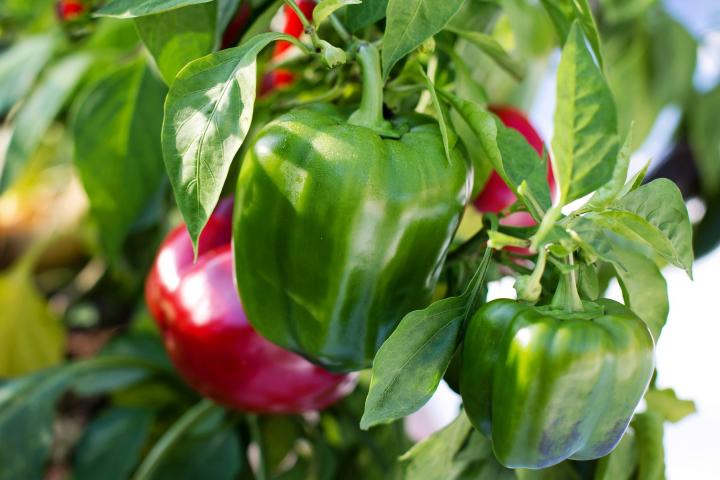
Grow sweet, colorful bell peppers with ease—from planting to harvest!
Cooking Notes
Peppers are excellent with almost anything: sandwiches, scrambled eggs, pizza, salads, and dips.
We also enjoy cooking peppers, whether in a beef stir-fry, as smoky roasted peppers, or in meat- and rice-stuffed peppers.
Plus, peppers can be pickled! See how to make pickled peppers!
ADVERTISEMENT
Hi, and thank you for your article. I have been gardening for decades and truly enjoy it. Growing peppers has always been a staple. This year however, weird things happened to them. 1: a couple plants never produced, but got dozens of tiny leaves where the blossoms would be. No fruit. 2: a brown film like a paper bag got wet and dried in them. Can be scrubbed off but 20% would remain in the creases of the fruit. 3: recently we went to harvest a few from the healthy plants (we did get a dozen or so from unaffected plants), and the recent fruits (8/26) were soggy and like mush. Never had any of these issues before, any ideas? Thanks again for your article and insight.
I had this same brown, papery splotches on my peppers and the plants did not grow normally (stunted). Fruit was small and no usable. What do I need to do? Thank you.
My pepper plants are always leggy. They are grown in a greenhouse as I live in Northern B.C, they get loads of flowers but don't set much fruit. Any suggestions?
Sounds like not enough pollination going on, need more pollinators to have access to plants.
Leggy is usually caused from low-light. Too much nitrogen can cause pepper plants to become very green and lush but not produce fruit. Solution: To figure out where your soil is at, you can get a soil testing kit to show the pH balance of your soil, as well as fertilizers for any nutrient deficiencies that the soil may have.
Legginess can be caused by a few things, such as not enough light. Are the plants all leaning toward a certain direction from which the most sunlight comes? If so, that might be the cause; in which case you might consider supplemental lighting. Also make sure that the plants are not overcrowded.
Avoid giving too much nitrogen, which can cause legginess and lots of vegetative growth vs. flowers; the fact that you do have flowers, though, suggests that this is not the issue.
Sometimes a little too much warmth, such as from a heat mat, can cause leggy seedlings; if you suspect this might be the case, be sure to provide enough airflow. This can also help the lack of fruit issue: Even though peppers self-pollinate, it can help to stir the air a bit with a gentle breeze from a fan, or to brush your hand across the plants gently (which can also help legginess). Or, if you don’t have a lot of plants, you can try hand pollination.
Too high or low temperature can also deter fruiting; when peppers bloom, try to keep the temperature inside the greenhouse below 85F in the day (hot peppers can tolerate higher temps) and above 60F at night.
Hope this helps!
I soaked some pepper seeds, from the red, Yellow and orange peppers I bought from the grocery store. I let them soak a couple of days, and planted them in little TP pots. To my amazement, they all sprouted. But Now, after 2 months in those pots, they will not grow a second set of leaves. I have them in a light filled window and gets full sun at the end of the day for a couple of hours, and my home is kept at 78 degrees. I am letting them dry out between watering. There are probably about 10 or 20 plants in each pot. Why won't the sprout more leaves?
Hi Kitty,
It sounds like there might be a couple issues keeping your pepper plants from thriving. First is that peppers need a minimum of 6 to 8 hours of direct sun per day, so you should put them in a spot that gets more direct sun, either inside or outdoors now that the weather has warmed. Another thing is the amount of plants per container. Peppers need plenty of room to grow and enough space around them for adequate airflow. That many plants per pot, no matter the size, is too many. Most recommend only one plant per pot to ensure proper growing conditions, so your plants would likely do much better being moved to their own pots or just a couple plants in larger containers.
I'm trying indoor seeds for the first time. I understand pepper seeds and seedlings love it hot. My house stays at 62. I use a heating mat, but it says it only heats to 10 degrees higher than the room. Should I double up on the heating mat? I have two.
Hi, Nicole, Doubling heating mats, thereby putting a lot of heat on the bottom, is not necessarily a solution. Instead, use the one heating mat and tent your seedlings to that they have a bit of greenhouse effect. Don’t seal them off entirely but, for ex., cover them loosely in a plastic bag. We hope this helps!















